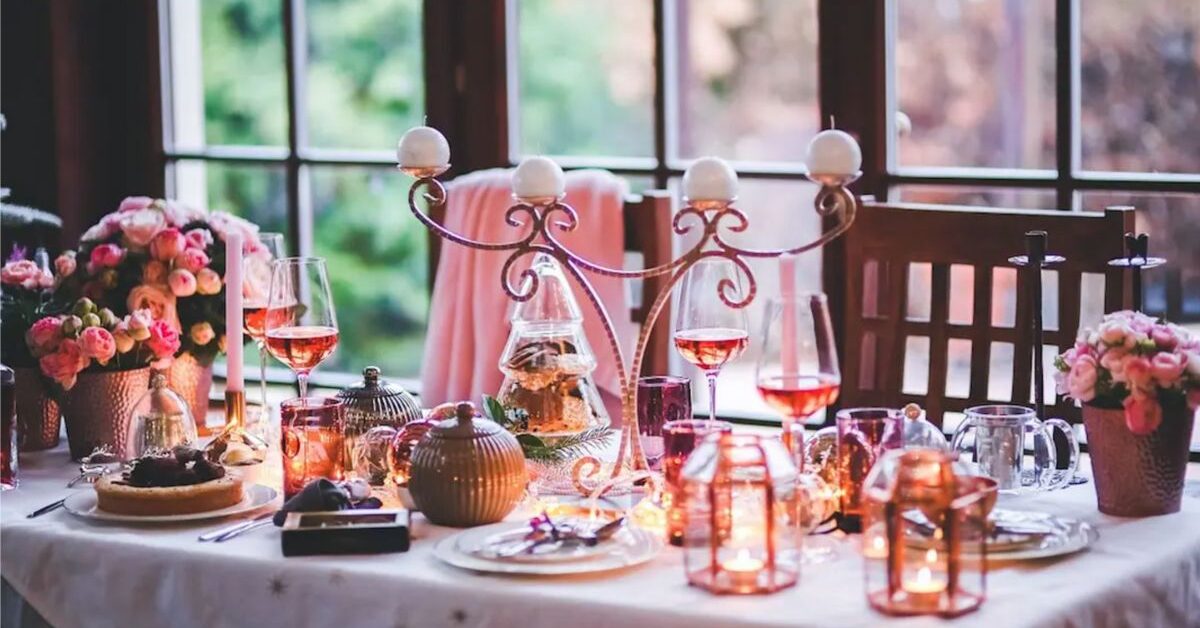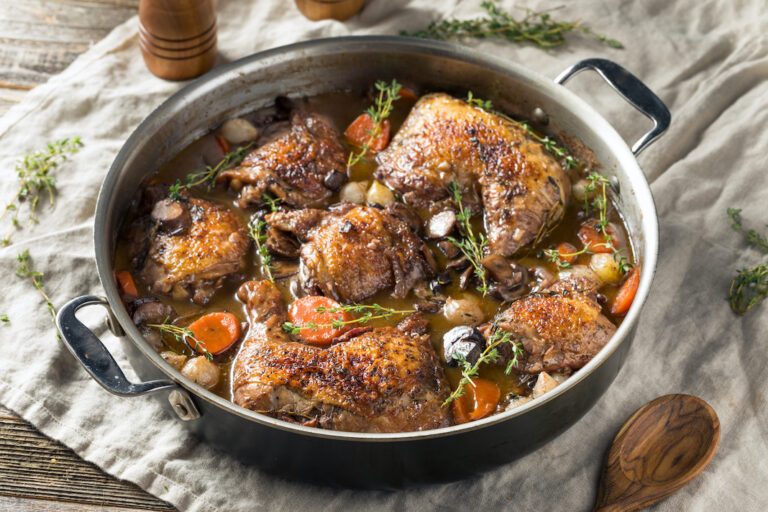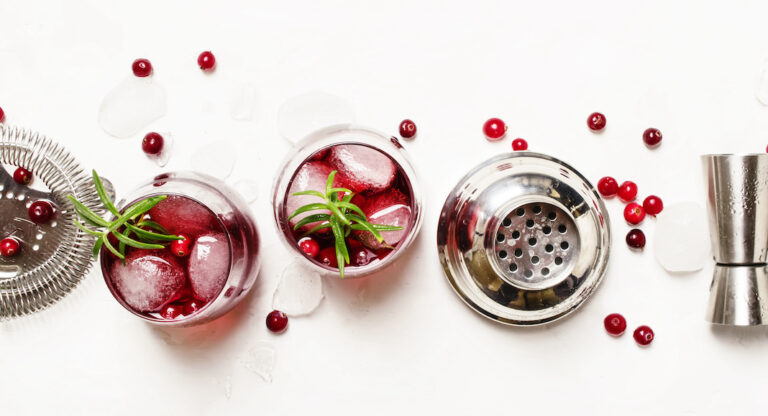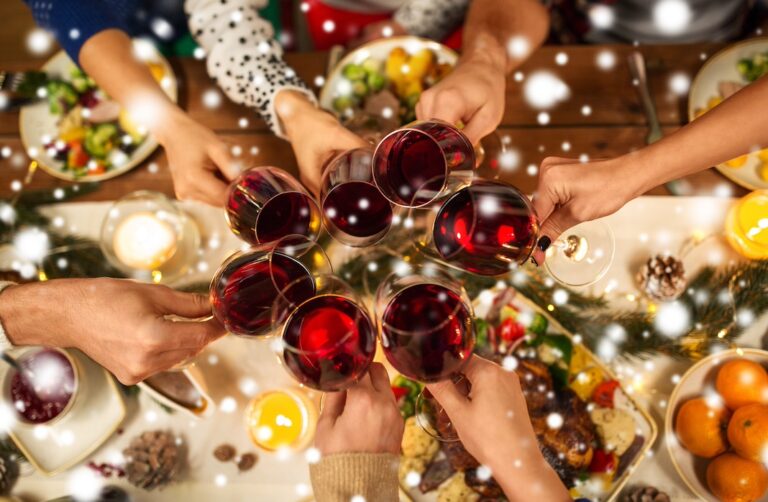As with all French traditions, the French Christmas meal is a stately and structured affair. No eating out at restaurants (since they’ll all be closed anyway). No last-minute Chinese takeout. For many French people, days of shopping and preparation go into a meal that begins after a Christmas Eve church service. Indeed, the Christmas Eve meal will begin at around 8 pm and often stretches until after midnight. Each course is served one after the other, with breaks for drinks, conversation, gift giving and small entremets. In France, this Christmas dinner is called Réveillon — which directly translates to staying awake all night for Santa Claus to come. So, the French almost literally stay up eating all night until…it’s time to wake up, at which point the kids pop out of bed and see what Père Noël has left them in their shoes left by the fireplace.
If you want to host your own Réveillon dinner, here’s what French people (currently planning their own Réveillon dinners) recommend that you do:
Facts About French Christmas Eve Dinner
In France, the primary Christmas celebration revolves around Le Réveillon. Unlike in other countries, French families’ Christmas Eve festivities emphasize food and culinary delights more than extensive decorations and gift exchanges. While French households decorate a Christmas tree and exchange gifts at midnight, the focal point is an elaborate, festive, multi-course traditional French Christmas menu showcasing high-quality ingredients and flavors. Preparation for this culinary extravaganza begins weeks in advance, with careful consideration given to table setups and menu planning. The French prioritize splurging on top-quality products such as foie gras, smoked salmon, cheeses, and Champagne to create a memorable dining experience shared with loved ones during the holiday season.
All the Setting Essentials for French Christmas Dinner

French people take great pride in hosting dinner parties year-round, and ahead of the Christmas meal, they go all-out to create a memorable and elegant dining experience around their Christmas tables. The table setting is a meticulous affair, with grandmother’s cherished china (perhaps some Limoges porcelain?) and the most exquisite silver meticulously arranged. Attention to detail and intentional sophistication are key to an excellent setting. The artistry extends to tasteful floral arrangements from the fleuriste that inevitably surpass the previous year’s display, demonstrating a commitment to aesthetics and celebrating the festive season with a flourish of style and refinement. And don’t forget to light some candles, or perhaps a vintage candelabra for the mood and a Diptyque candle to fill the room with a lovely scent.
What French People Drink During Christmas Celebrations

The French approach to festive gatherings is often marked by a delightful progression of libations, starting with the quintessential apéro, a pre-dinner social ritual involving light snacks and perhaps a glass of bubbly from a storied heritage house like Bollinger. This is seamlessly followed by wine (lots of it!), and in true French fashion, there’s always more to come. Vin chaud, or mulled wine, adds a warm and comforting touch to the celebration, especially during the chilly holiday season. As the culinary journey unfolds, the selection of wines becomes an art form—opting for a crisp white to complement a fresh seafood platter and a robust red to enhance the flavors of an earthy foie gras, ensuring a harmonious pairing that elevates the overall dining experience. To wrap up, there’s always a digestif, which could be a cognac, Armagnac, or another kind of brandy.
Food: French Christmas Dinner Menu

Small Bites and Bubbles
Réveillon is a decadent affair, so everything typically saved for special occasions should be on the docket. The main French Christmas meal starts with a toast of Champagne, often accompanied by the traditional French “Santé!” Kir Royale and Kir Breton, with crème de cassis and champagne or cider, respectively, are popular choices. Kids join in with apple juice or non-alcoholic Champagne. Guests share delicious canapés during the apéro. It’s a fun and social time before the main meal, creating a festive atmosphere filled with tasty treats. Small, one-bite delights such as smoked salmon on blinis, bacon-wrapped prunes, Gougères (baked cheese puffs), Gruyère Cheese Twists, and various Rillettes are served. Huîtres, or oysters, are a classic French Christmas tradition (if you can afford them), served with lemon and a shallot mignonette.
Starters and Soups
Following the apéro enjoyed in the living room, guests transition to the dining room to commence the Christmas meal. A renowned starter is foie gras, often in slices to be savored on a baguette or Pain d’épices (a type of French gingerbread). It’s a cultural norm to delicately place the foie gras on the toast rather than spread it. Winter fruit preserves like fig or persimmon may accompany it, though many prefer to enjoy their foie gras as is. Other Christmas starters include Escargots with Persillade Butter, Pâté en Croûte, creamy chestnut soup, and for coastal regions like Brittany, seafood delights such as oysters, langoustines, and scallops. A beloved Brittany specialty is “Coquilles Saint-Jacques,” featuring scallops in a creamy sauce, often baked with breadcrumbs and cheese. Contrary to clichés, caviar and lobster are uncommon at a traditional French Christmas, and typically reserved for wealthier families.
Main Courses
Perhaps the most traditional French main, and a key feature of a French Christmas feast, is a large roast dinde, or Christmas turkey, traditionally prepared with chestnut stuffing and accompanied by roasted potatoes, chestnuts, and sometimes cooked apples. The French eat classic side dishes like Gratin Dauphinois and Green Beans Almondine to complement the main course and the gravy boat. For smaller gatherings, a main dish like chapon (capon), caille (quail), or poularde (fattened hen) could be a popular alternative. While poultry takes the spotlight, regional variations emerge, such as the Alsace region favoring oie (goose), Périgord residents relishing duck, and a festive ham taking center stage in the French Antilles. Some families choose braised rabbit with prunes as a unique and flavorful Christmas dish. Though increasingly rare, certain game meats like guinea fowl have had a long tradition on the French Christmas table.
Cheese and Salad
The large cheese platter served before dessert is a quintessential part of French dinner, including the Christmas Eve meal. While the Christmas cheese platter doesn’t differ significantly from those at other times, there’s a tendency to indulge a bit more, offering a greater variety of cheeses. French cheese platters, even during Christmas, typically avoid adornments like dried fruits, nuts, or grapes. The cheeses are presented in their pure form and enjoyed with sliced baguette, country bread, or pain d’épices. The cheese course adds a delightful and traditional touch to the festive family meal together, often accompanied by a straightforward lettuce or frisée salad dressed in a classic French vinaigrette.
The Desserts
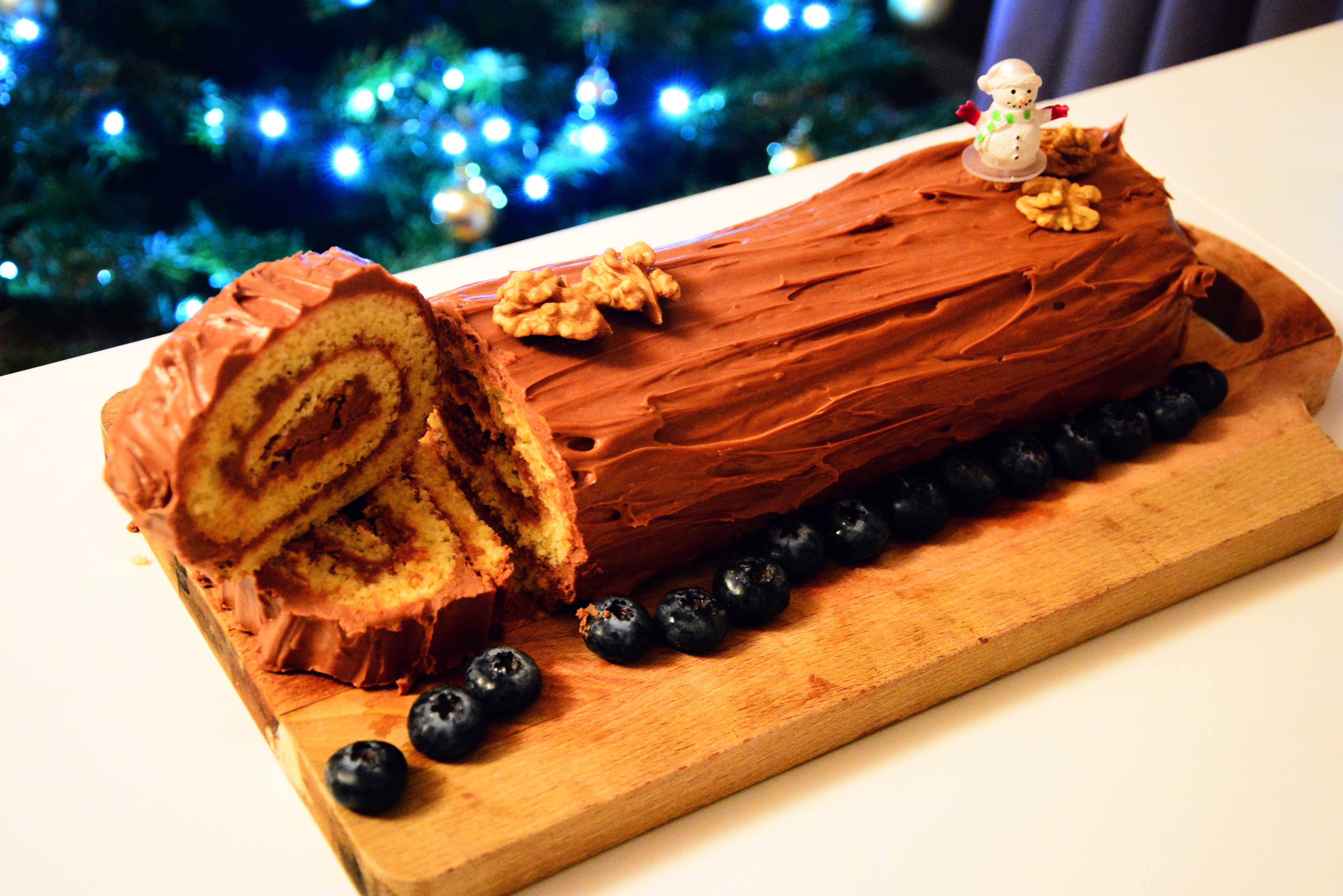
Many French people wouldn’t consider it a proper Christmas meal without La Bûche de Noël, or Yule log, a delicious rolled cake coated with frosting and then decorated to look like a wooden log. While the French Christmas cookies aren’t so much a thing, French culture reserves a special place for marrons glacés, or candied and glazed chestnuts, which are a delicacy reserved for the holidays since they can be as much as €2.50 per chestnut. You would give this as a gift, so they often find their way to the table later in the evening amidst the flurry of ribbons and wrapping paper. Pain d’épices, or spiced bread, is a less-fancy dessert common on the Christmas table and similar to gingerbread, made from rye flour, honey, and spices.
(In Provence, there is a special traditional for le repas de Noël, called the Thirteen Desserts. Various treats like nougat, calissons, candied fruits, and nuts are arranged for guests to enjoy, and it’s considered to be good luck if you eat a little of each of these sweets at Christmas time.)
After all this is eaten, everyone is sprawled on the couches and rugs, awaiting the pitter-patter of little feet coming to peek in their shoes. Christmas morning marches on with a late brunch and more drinks. A traditional French Christmas Day, however, won’t vary much as the day is reserved for family, leftovers, and doing a lot of nothing.

